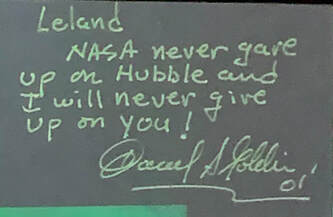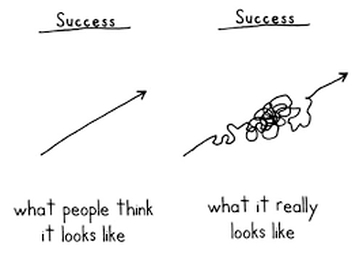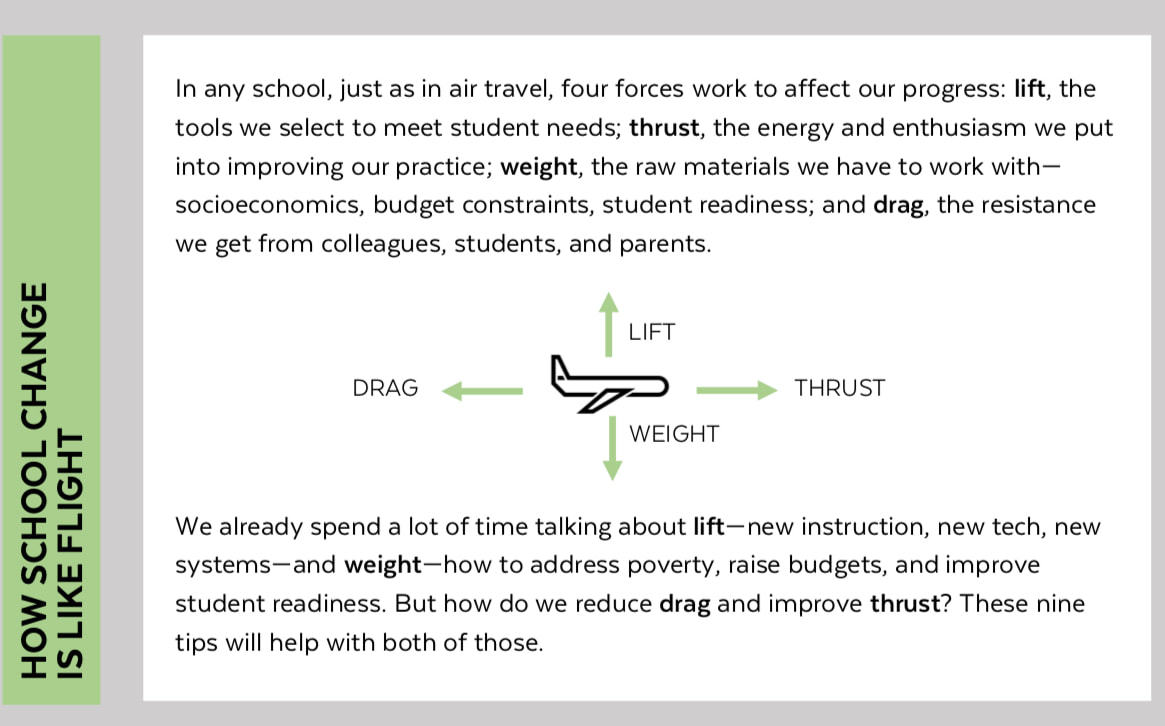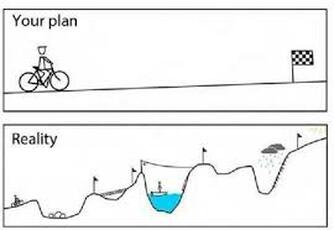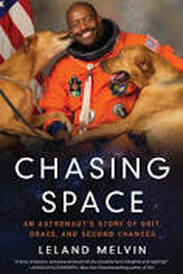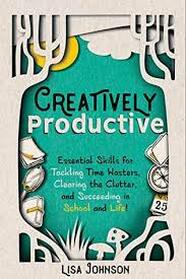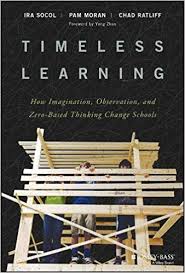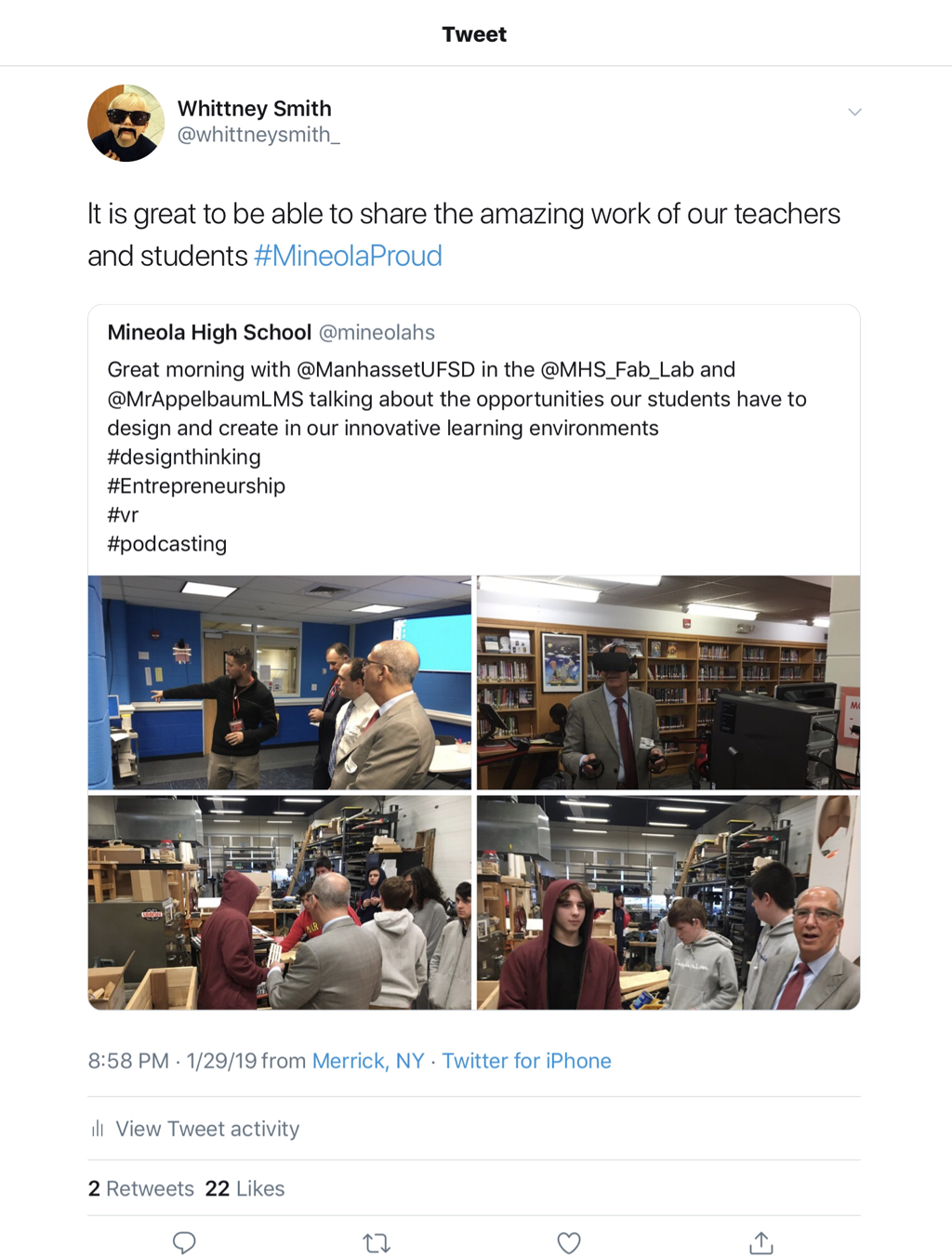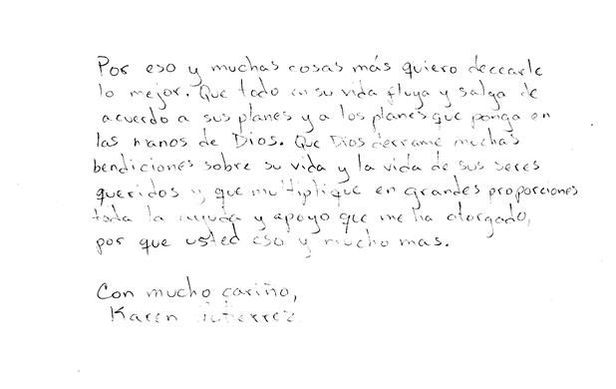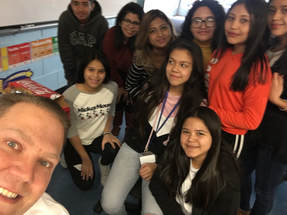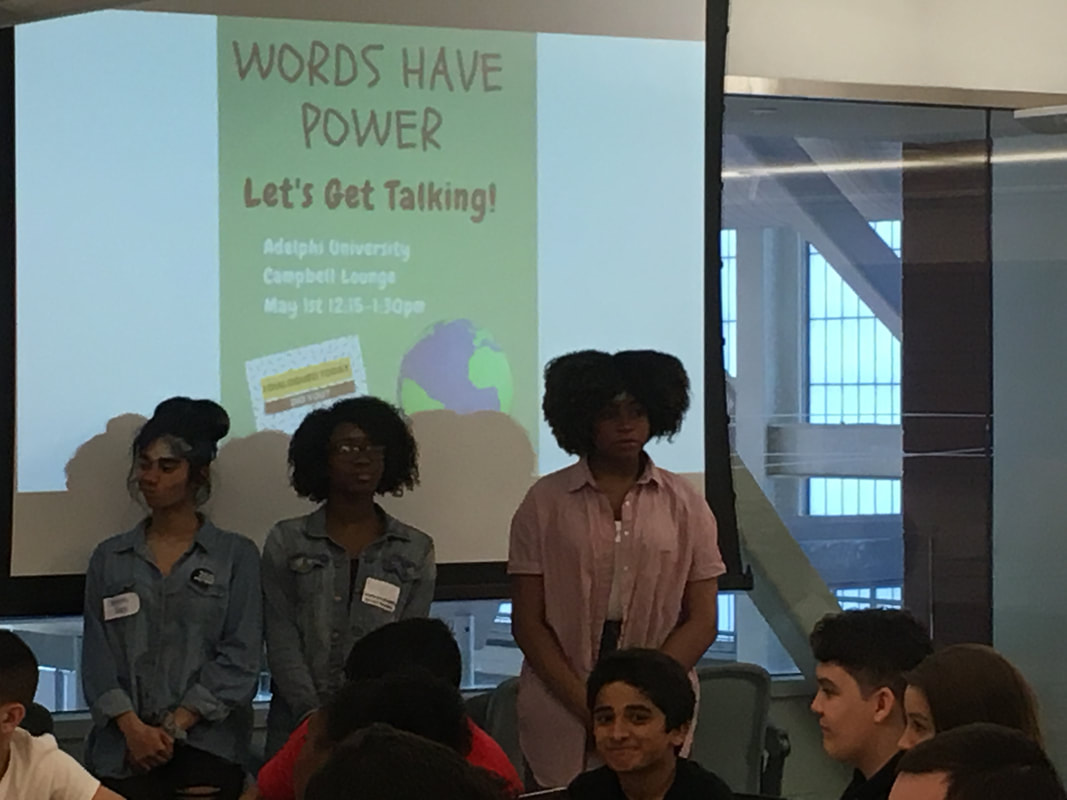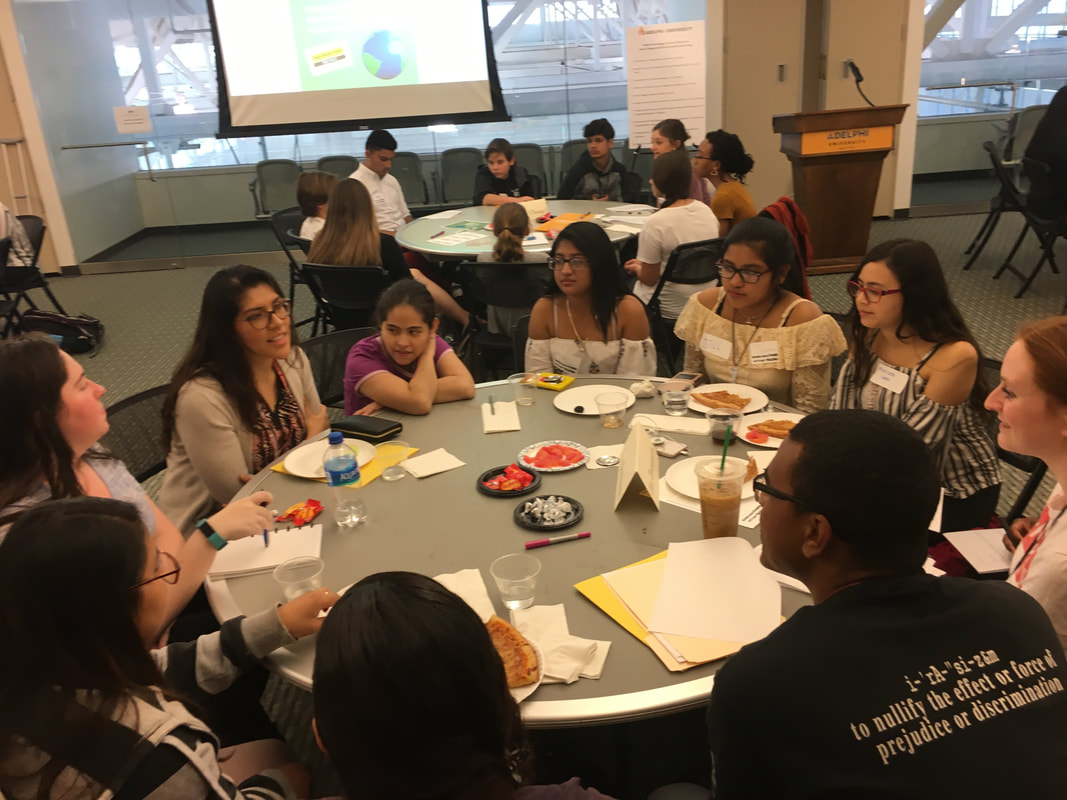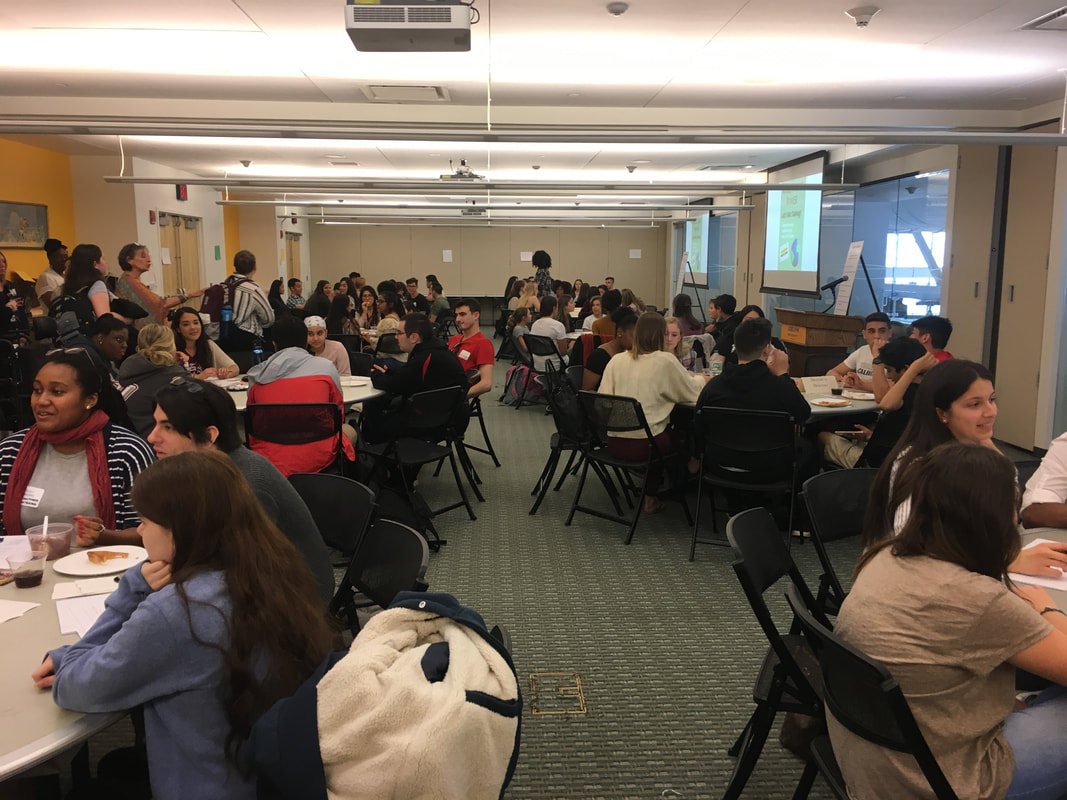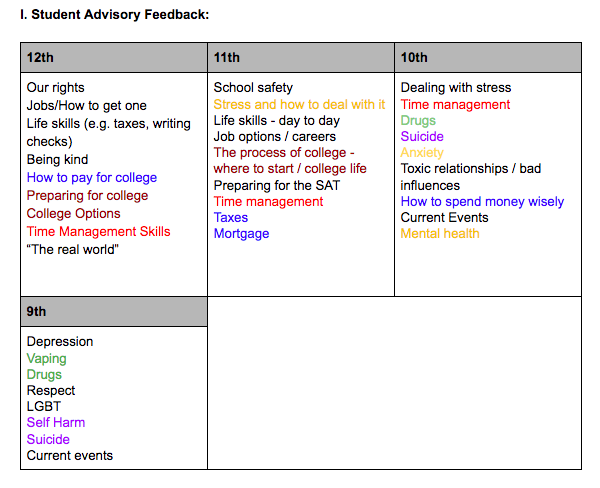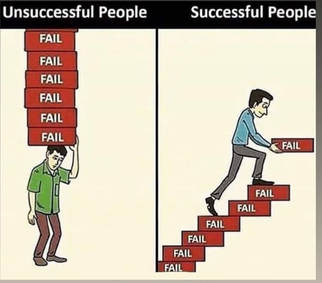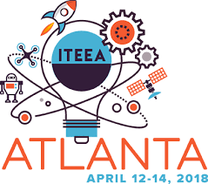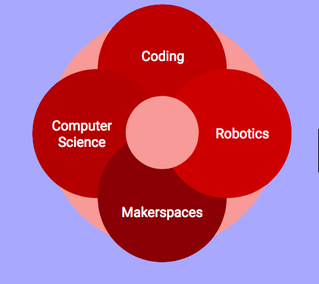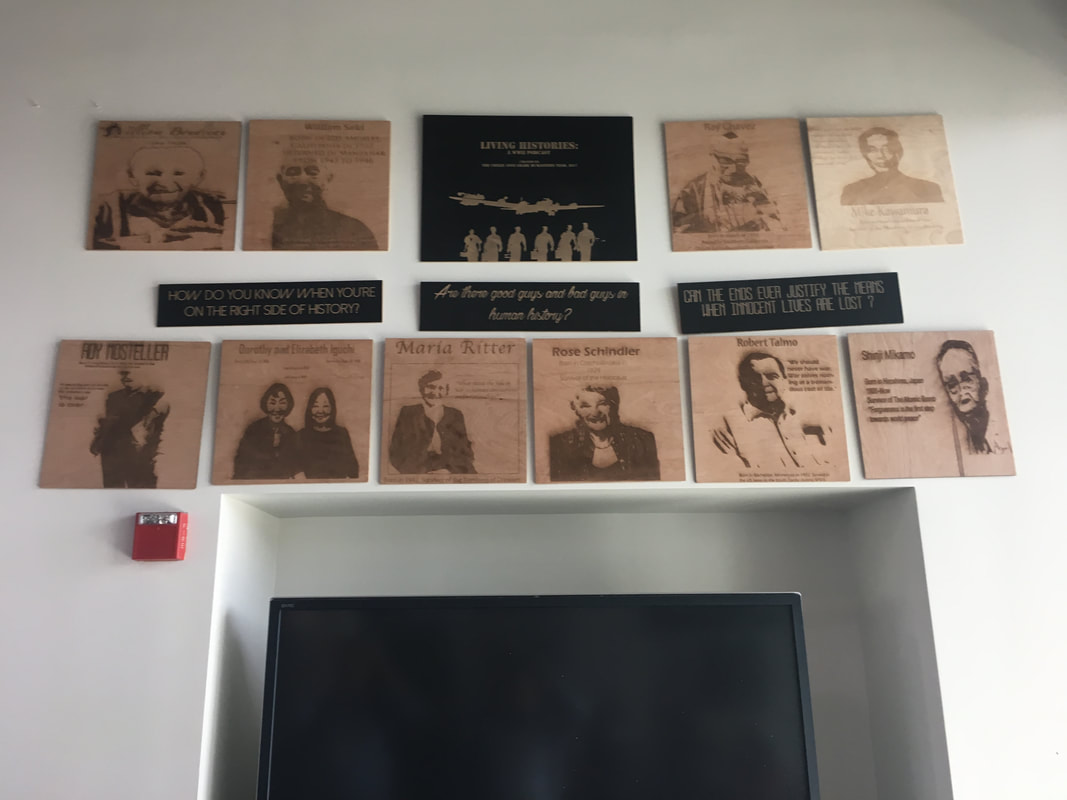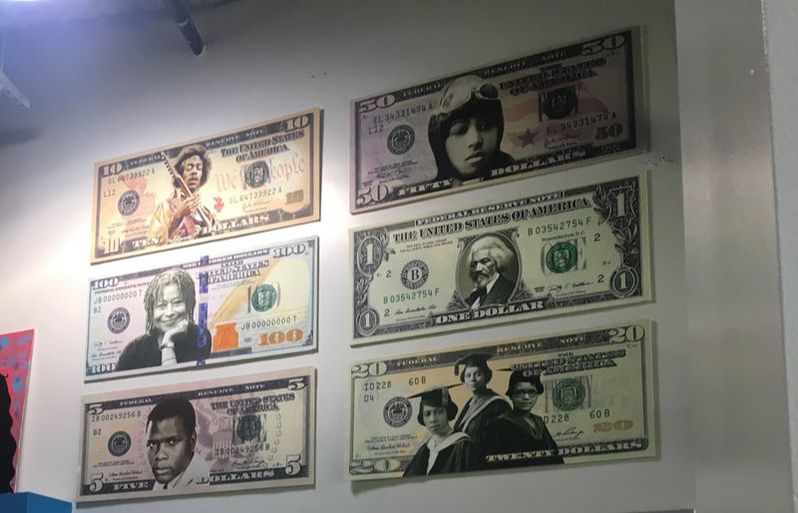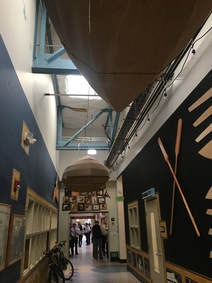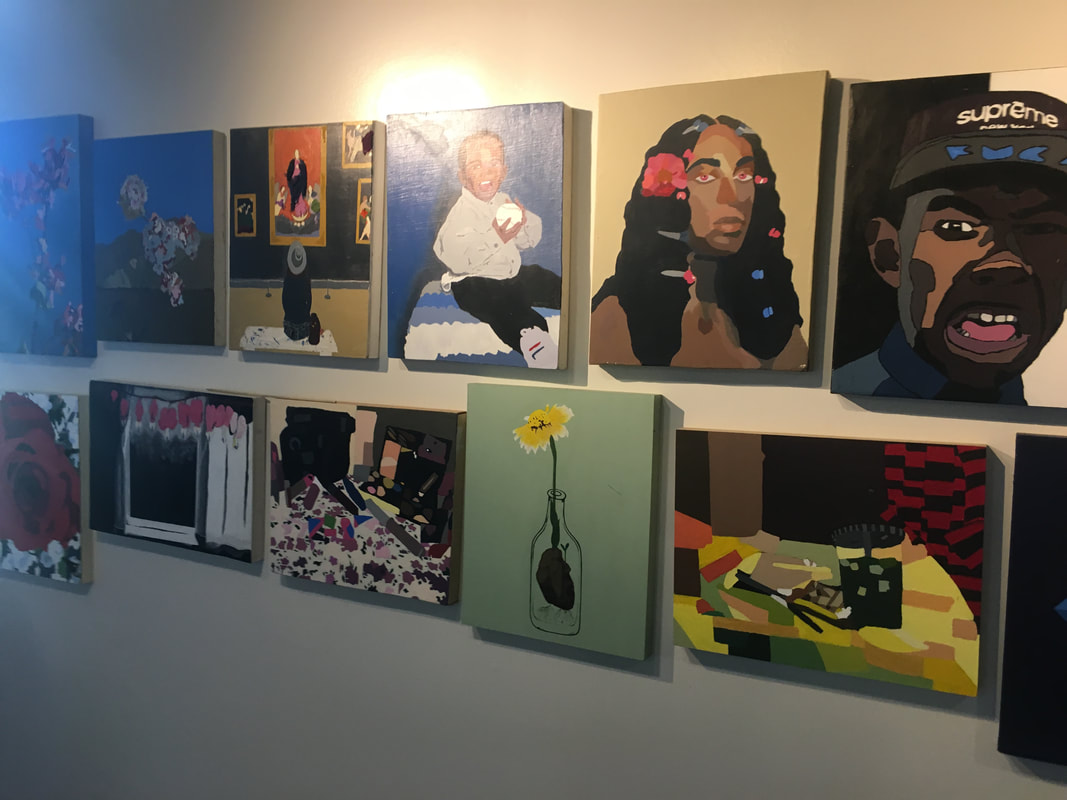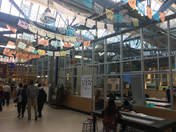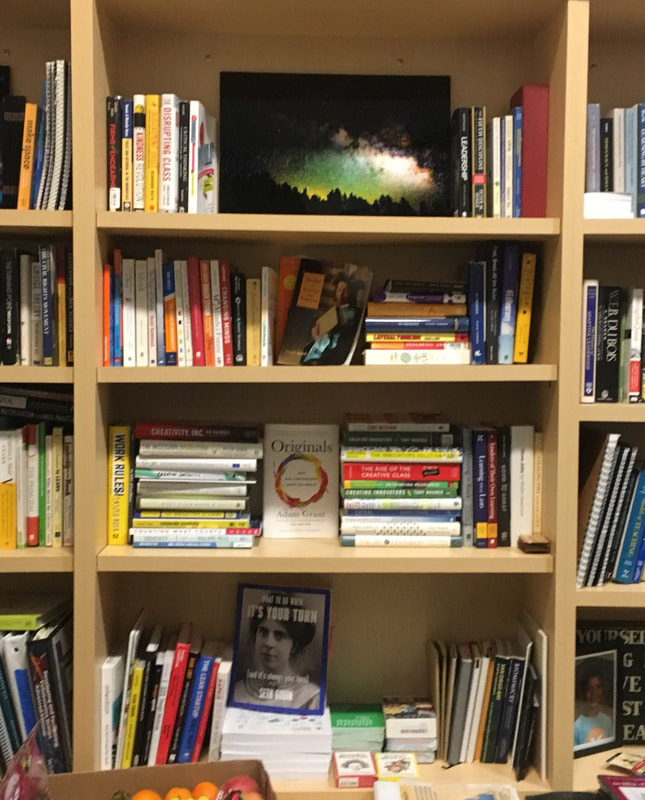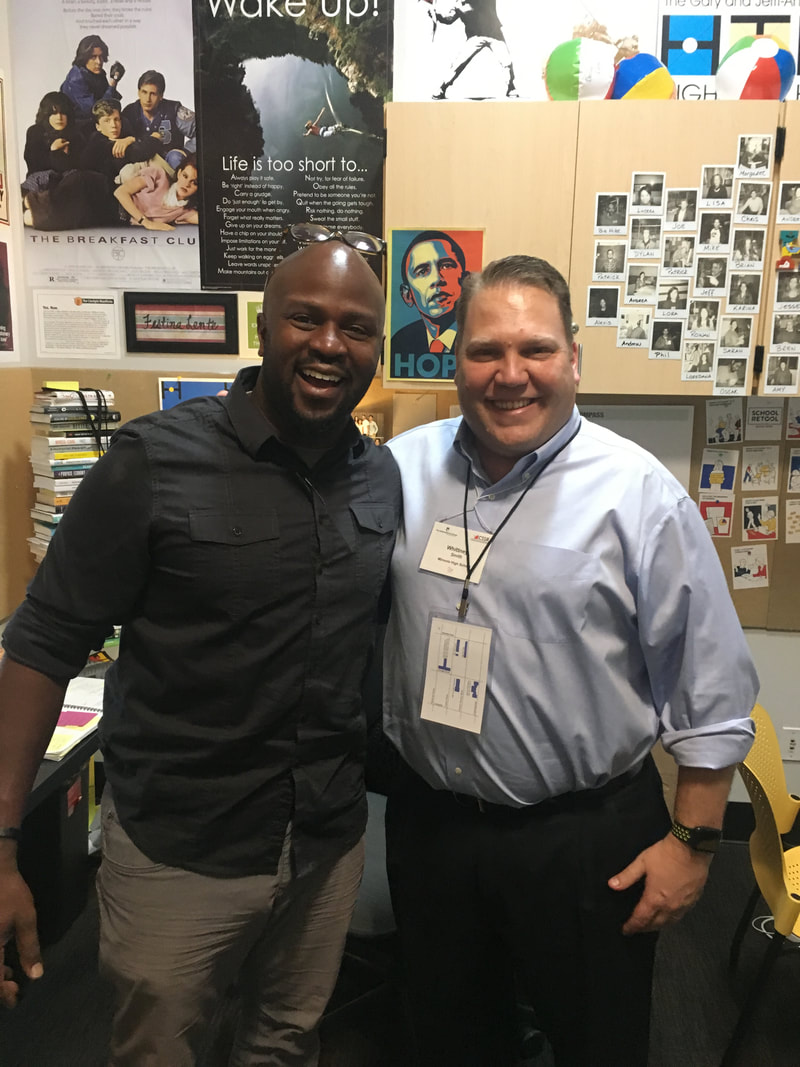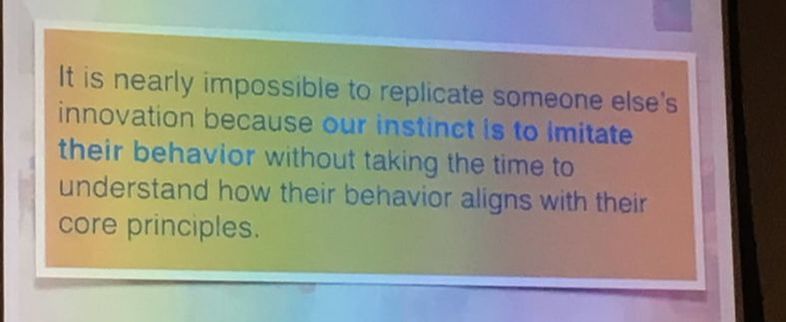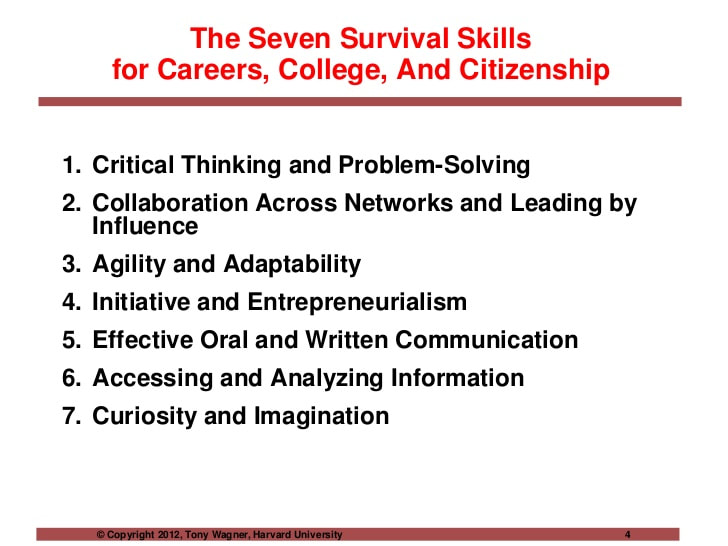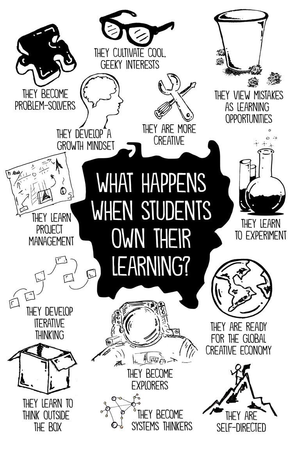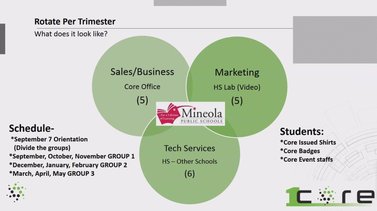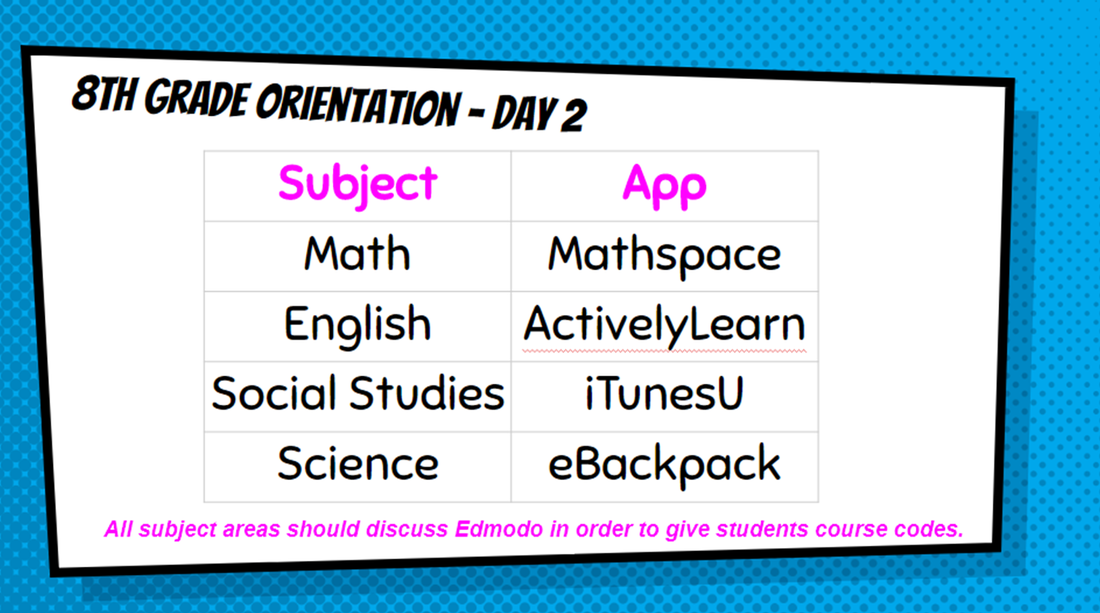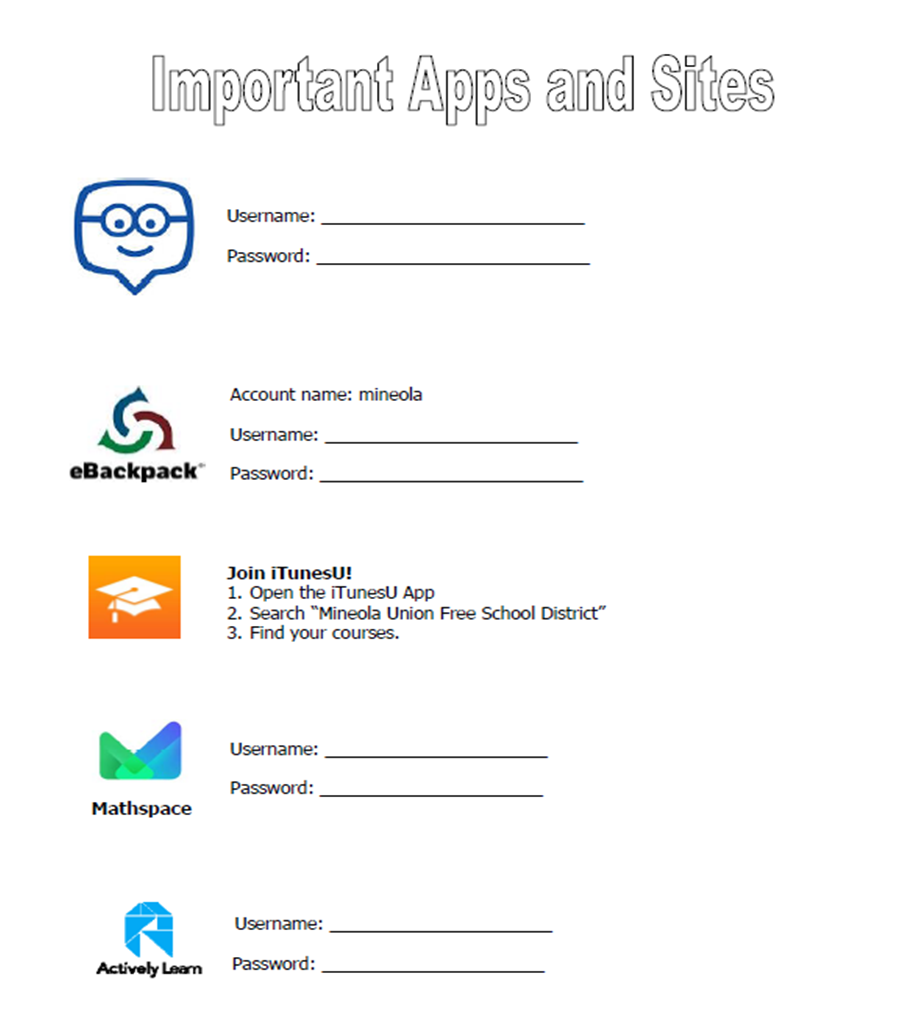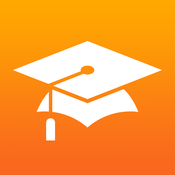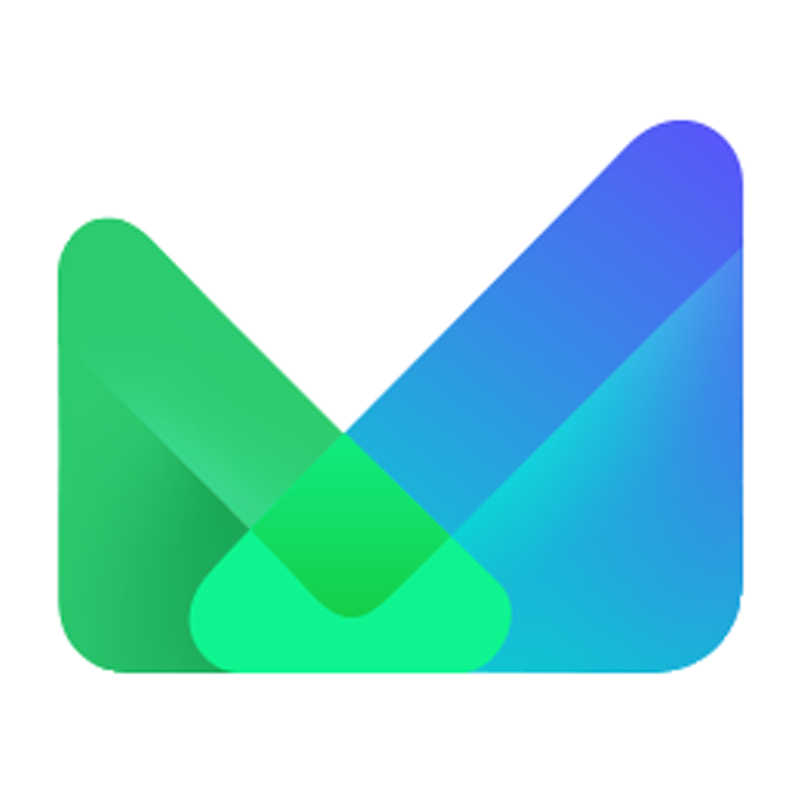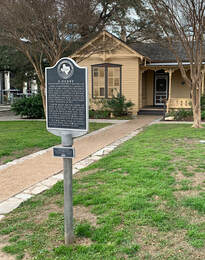 So... back to Sunday evening. The Special Olympics opened the evening with a reception that featured a series of writable glass walls in aa large conference room space where participants could add their response to the question, "What does inclusion mean to you?" We also had the opportunity to talk to representatives and teachers who explained the Unified Chamption Schools program. After the reception, it was time to start planning the week. Just to put this conference into perspective, the schedule is a 164 page with a table of contents. There are so many choices, it is overwhelming. There is even an app to help you organize your day. Day 1: I started the day with a walking tour of Austin. It began early and we saw several sites such as William Sydney Porter's home. For those of you who don't know him, he has written many stories including The Gift of the Magi and The Ransom of Red Chief to name two under the name O. Henry. It was cold and I cut the tour short... but not before learning that the guide works for a company called Tipster Tours. This company takes people on free, no reservation, walking tours in cities around the country. From their website, "You pay what you like after the walk. You decide. We truly believe that if we do our best to create a great experience for people…without demanding anything in return…good things happen. Positive energy is created, which is beneficial to all!" So Cool! 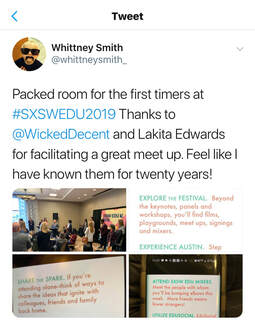 Back at the conference, I decided that a good place to start was at the "First Time to SXSW EDU Meet Up." This session was packed and led by Dan Ryder (@WickedDecent) and Lakita Edwards (@ArtsHumana). The session was packed with newcomers like me and the facilitators provided opportunities for us to meet and talk. Additionally, they shared tips like:
" Connect, Reflect, and Have Fun! " Day 2 Well, after a crazy day one, I did some reflection. I perused the catalog and scaled down my expectations... not my expectattions for learning, but rather than breadth, I wanted depth. My Day Two Schedule:
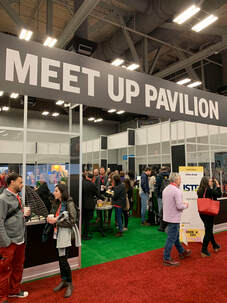
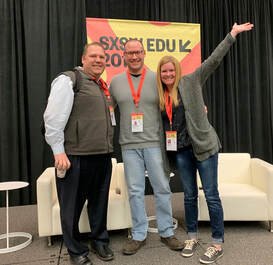
This attitude led him to become an at NASA, an organization he said, works really well together. From there, he experienced tremendous challenges, including losing his hearing in a pool training exercise, that he overcame to be able to make several space flights. He encouraged the audience to use what kids love in order to teach them more effectively. His website, lelandmelvin.com has more about his current work as well as many inspiring videos. Don't forget to check out the "stupid astronaut tricks." And finally, don't forget the "man in the yellow hat" from Curious George who symbolically represents the people in your life you constant lift you up and are there for you.
Day 3 Day 3 was going to be a day of networking with educators, visiting the vast exhibit hall, seeing several speakers , and then engaging in two hands-on workshops.
"Limits force us to rethink how we are working and push us to new heights of creativity." Finally... The exhibit hall was vast and featured everything from start-ups to colleges and universities, new technology products, furniture, and a mobile fab lab. Several of my stops included:
Jennifer's full presentation can be seen here: https://youtu.be/3s_NkSEWJZg The Restaurants & CultureSome new books for the reading list:
0 Comments
I have been a firm believer in the power of social media for quite some time now. I am an avid Twitter and Instagram user in both my personal and professional lives and have encouraged my colleagues to "tell their story" via Twitter at our high school.
We have been very successful at telling our story and "virtually" opening up our school to our community... and world. We have also made connections... the purpose of this post. I love hearing from our teachers about the professional learning networks (PLNs) they have become a part of. I love my own PLN and have grown so much from the connections I have made. It is easy to stay isolated, but we are better together. In our school, we are connected! We are able to share our own work, values, interests, celebrations, and the amazing accomplishments of our students both inside and outside of the classroom. We are able to connect our community to our school in ways that were previously inconvceivable... that is redefining learning. We can also grow professionally in real time. By following each other as well as other practitioners and researchers we no longer have to wait for professional development to come to us. We can create our own, anytime, anywhere. And... when you meet new people, because face to face connections are equally if not more important, you are able to keep that connection active through social media... all the time. So... if you are not on Twitter (or Instagram for that matter), it’s time to connect. Social media is powerful! follow me @whittneysmith_ and our high school @mineolahs  Have you ever wondered what an English Language Learner feels like... how much work it is to learn a new language in school? Well, I got a small taste of it when Ms. Gutierrez handed me a letter in Spanish. I certainly know that it does not compare to coming to a new country and entering a school where the majority of people speak English, but nonetheless, it made me nervous. She told me she wrote it in Spanish because her best thinking and expression is done that way. Should I ask someone to translate it for me? I though about that... it would be easy. Someone else would do the work for me. But, that is not what our students do when I walk into their classes. That is not how you learn. Our students use their resources such as changing the language in settings on their iPad, finding Spanish resources online, using the camera and the translate app to decipher the language, and just plain struggling until they get it. They have determinition, they have passion, and they have grit. They also have wonderful teachers who support them and understand that struggling is where the learning occurs. So, for me... how could I take the easy way out? I started by trying to read the letter. After all, I did take Spanish in high school and did fairly well. That did not work. While I could read many of the words on the page, I could not read enough of them to make meaning. So, I opened up the translate app and held my iPad above the page to capture the words on the page. That didn't work. Translate does not read handwriting. I had to understand the letter... I had to make meaning of the words; so I decided to type the letter, as written in Spanish, into Google Docs. I knew then that I could use the "translate document" feature. So I did it... word after word I retyped the letter. What a reward when I had the computer translate my Spanish typing into English. It wasn't perfect, as we all know, but it enabled me to make meaning of a document that I otherwise would not have been able to read. In the end, I learned so much about my own learning. Educators call this metacognition... I call it knowing what to do when you don't know what to do. I also learned so much about our students and how having a growth mindset is so important in learning, especially when the learning is difficult. Thank you Ms. Gutierrez, not only for your kind and inspirational words, but for being their for our students and always inviting me into your classroom so see the great learning taking place. Thank you students for inspiring me through your hard work and determination for it is those traits that are more important that natural ability! "Believing in yourself and fighting for your dreams is what enables you to live each day and face every obstacle."
|
|||||||||||||||||||||||||||||||||||
| The Power of Words Essential Questions:
1. Scenario 1: Race 2. Scenario 2: Sexuality 3. Scenario 3: Religion 4. Scenario 4: Disability | Our Adelphi partnership flourished over the spring semester and with the support and partnership of Diana Feige, Ed.D., Clinical Associate Professor and Melanie Bush, Ph.D., Associate Professor of Sociology we created an amazing day of dialogue where over sixty Mineola High School students met with Adelphi students to discuss issues of race in society. The dialogue was rich and honest. It was all we hoped it would be and more. It was empowering for the high school as well as college students and what we hope is the beginning of a powerful partnership in this area of our students' education. |

We also engaged our student body in the cafeteria, during all lunch periods, to provide us with feedback as it related to the sessions. This feedback (see "Student Advisory Feedback" below) was organized by grade, coded, and then used for curriculum writing this summer. What we learned was that our students valued the dialogue more than the scripted lesson. They want to talk about topics that are "real" to them. They also helped us to recognize that like in any good lesson, we needed to differentiate the content and delivery based on the grade levels as well as the individual group needs/wants. This year's program will include a menu of choices and suggested materials that will help our advisors to craft their sessions, with their advisees.
This unique program, tailored to the specific needs of our students, will develop over time and require regular input. Year one had lots of successes!
- Students each have an advisor who will stay with them for their high school career
- Groups formed developed rapport and formed bonds
- Growth Mindset principles were learned and developed
| The theme for the International Technology and Engineering Educators Association (ITEEA) 80th Annual Conference focused on building bridges within the STEM community and beyond. Building bridges helps everyone to understand the important role technology and engineering contributes to STEM education. | |
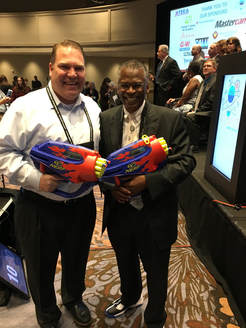
My learning began with Professor Richard Kimbell of Goldsmiths University of London whose work is around capturing really good learning experiences from the classroom in portfolios and then enabling those portfolios to be assessed with a high degree of reliability. The highly valid and interesting work that goes on in classrooms is difficult to assess reliably. He uses digital portfolios, assessed by groups of teachers using the simple question, "Which one is better?" He cites Dylan Wiliam (1998) who asserted that "...most summative assessments were interpreted not with respect to criteria (which are ambiguous) ...but rather by reference to a shared construct of quality that exists in well defined communities of practice." This concept was called "connoisseurship" by Michael Polanyi in 1958. Kimbell concluded that:
Another highlight was meeting Dr. Lonnie Johnson. Dr. Johnson is a former Air Force and NASA engineer who invented the massively popular Super Soaker water gun. He reminded the audience to believe and have confidence in our students. Technology will bring solutions he said, and made sure that although ultimately successful, the super soaker took eight years and a lot of false starts along the way. He has since been developing the Johnson Thermoelectric Energy Converter (JTEC), an engine that converts heat directly into electricity.
Dr. Johnson truly embodies a growth mindset and his message was unbelievably inspiring.
It was a pleasure to represent the Mineola School District along with Nicole Culella (PK-12 Instructional Leader) at this internationally attended event where we learned along side of passionate educators and had the opportunity to share our work as we presented a session entitled "Threading and Embedding Engineering Design Thinking PK-12." Our session was well attended and received by a packed room of educators representing schools from Maryland, Georgia, Utah, New York, North Carolina, Illinois and China.
- comparative judgement is easy and quick
- it works with the grain of human judgement
- Connoisseurship, like skill, can be communicated only by example, not by precept (Polanyi)
- by comparing examples we distinguish quality
- with a reliability equivalent to multiple choice testing
- without distorting the portfolio performance
Another highlight was meeting Dr. Lonnie Johnson. Dr. Johnson is a former Air Force and NASA engineer who invented the massively popular Super Soaker water gun. He reminded the audience to believe and have confidence in our students. Technology will bring solutions he said, and made sure that although ultimately successful, the super soaker took eight years and a lot of false starts along the way. He has since been developing the Johnson Thermoelectric Energy Converter (JTEC), an engine that converts heat directly into electricity.
Dr. Johnson truly embodies a growth mindset and his message was unbelievably inspiring.
It was a pleasure to represent the Mineola School District along with Nicole Culella (PK-12 Instructional Leader) at this internationally attended event where we learned along side of passionate educators and had the opportunity to share our work as we presented a session entitled "Threading and Embedding Engineering Design Thinking PK-12." Our session was well attended and received by a packed room of educators representing schools from Maryland, Georgia, Utah, New York, North Carolina, Illinois and China.
| We began with a Padlet as a needs assessment so that we could make sure that we met the learning targets of our attendees. We then transitioned to a look at Mineola's PK-12 use of Engineering Design Thinking which includes a comprehensive and vertically articulated embedding of coding, computer science, robotics, and makerspaces. The themes of each grade were articulated and the thoughtfulness of the scaffolded skills that build on each other as students advance through the school system were demonstrated with examples of the programs that all of our students are afforded. K-2: Choice and Exploration 3-4: Invention and Design 5-7: Iteration and Innovation 8-12: Collaboration and Production | "Failure is an option here. If things are not failing, you are not innovating." |
As our presentation concluded, we networked with other educators and took away several key points.
- There is a clear need for comprehensive curriculum in STEM education.
- There are vast inequities that exist in STEM education across the United States and internationally.
- We are #MineolaProud of the work of our Board of Education, Administrators, Teachers, and of course, our students who make the incredible work being done in Mineola possible.

There are fews things that educational leaders do that are more important than hiring the right teachers. That is why we need to constantly revisit the construct that we use and determine whether, in the short amount of time that we have with each person, are we yielding the best results. Our superintendent reminds us that the process of hiring and developing a new teacher is like a "marraige;" we want to make sure that we are "with" the right person, and will continue with them for the long term. So... how do we do that?
Our traditional process was already collaborative as teachers and administrators work together to cull through the resumes that we receive and choose the candidates for interviews whose resumes and cover letters stand out. We look at certification, well-written and articulate cover letters (without spelling or grammatical errors), experience (student teaching or professional), and skills that match our needs. For me, the number of pages of the resume does not matter, but rather the content within it.
When we bring the candidates in, we ask questions, require a writing sample (in math we have them solve a difficult problem) and then move some on for demonstration lessons. Finally, our superintendent meets with our short list of candidates and recommends the successful candidate to our Board of Education for hiring.
While there are many great questions to ask prospective teachers, the lists can be extensive (below are some that we use). Furthermore, candidates' answers are often filled with educational jargon and without careful follow-up, can lead interviewers to believe that a concept is known, when in fact only the term is. In otherwords, the answers lack depth of knowledge.
What's New? Changing the paradigm.... A Quadrilateral Approach.
We have been developing the Four Cs (creativity, collaboration, critical thinking, and communication) as a pillar of our instruction at the high school. While this notion is not new, if "modern" (we are 18 years into the 21st century) education is ever going to make a difference in the lives of students, teachers must be able to do this work in classrooms every day. How do we see this before we hire?
Enter the group interview. The construct of this new paradigm starts with bringing teacher candidates into our interview process in groups. For the first hour of the interview, we have them work on a task (a multiday lesson plan) in groups.
For our English interviews, we provided all candidates with a copy of "The Story of an Hour" by Kate Chopin and asked them to read it in advance of the interview date. When they arrived, they arrived as a group and we handed them the task to complete. We place them in groups... and let them go.
Task: You have an 11th grade integrated class including students with IEPs as well as English Language Learners. Using "The Story of an Hour," construct a two day lesson plan that includes the following:
We (the committee of teachers and administrators) observe them working and take notes using a list of "look-fors." We then have them share out their lessons along with the rationale. During the next hour, we have them complete their writing sample while we meet with each one individually beginning with a new question, "What did you think of the process?" Their answers are telling in many ways. Sometimes, they coincide with how they worked with their group. Sometimes they don't. For example, several candidates told us that they would have participated more but did not want to dominate the conversation or "step on anyone's toes." Almost all of them told us that they enjoyed the process of working with others and knew that it would be a big part of their job if they were the successful candidate. They could see right away that we value collaboration and teamwork.
Including the group dynamic has been a game changer for us. It has uncovered the Four Cs and allowed us to push our thinking beyond the Q & A. This quadrilateral approach allows us to examine four aspects: interview, writing sample, group activity, and demonstration lesson. By doing so, we can see that all quadrilaterals have four sides, but each side can be different and create a very different shape. And, not all shapes match our school and district needs.
Sample Interview Questions:
Our traditional process was already collaborative as teachers and administrators work together to cull through the resumes that we receive and choose the candidates for interviews whose resumes and cover letters stand out. We look at certification, well-written and articulate cover letters (without spelling or grammatical errors), experience (student teaching or professional), and skills that match our needs. For me, the number of pages of the resume does not matter, but rather the content within it.
When we bring the candidates in, we ask questions, require a writing sample (in math we have them solve a difficult problem) and then move some on for demonstration lessons. Finally, our superintendent meets with our short list of candidates and recommends the successful candidate to our Board of Education for hiring.
While there are many great questions to ask prospective teachers, the lists can be extensive (below are some that we use). Furthermore, candidates' answers are often filled with educational jargon and without careful follow-up, can lead interviewers to believe that a concept is known, when in fact only the term is. In otherwords, the answers lack depth of knowledge.
What's New? Changing the paradigm.... A Quadrilateral Approach.
We have been developing the Four Cs (creativity, collaboration, critical thinking, and communication) as a pillar of our instruction at the high school. While this notion is not new, if "modern" (we are 18 years into the 21st century) education is ever going to make a difference in the lives of students, teachers must be able to do this work in classrooms every day. How do we see this before we hire?
Enter the group interview. The construct of this new paradigm starts with bringing teacher candidates into our interview process in groups. For the first hour of the interview, we have them work on a task (a multiday lesson plan) in groups.
For our English interviews, we provided all candidates with a copy of "The Story of an Hour" by Kate Chopin and asked them to read it in advance of the interview date. When they arrived, they arrived as a group and we handed them the task to complete. We place them in groups... and let them go.
Task: You have an 11th grade integrated class including students with IEPs as well as English Language Learners. Using "The Story of an Hour," construct a two day lesson plan that includes the following:
- standards addressed
- skills addressed
- specific objectives for each day
- an Essential Question
- classroom activities
- formative assessments
We (the committee of teachers and administrators) observe them working and take notes using a list of "look-fors." We then have them share out their lessons along with the rationale. During the next hour, we have them complete their writing sample while we meet with each one individually beginning with a new question, "What did you think of the process?" Their answers are telling in many ways. Sometimes, they coincide with how they worked with their group. Sometimes they don't. For example, several candidates told us that they would have participated more but did not want to dominate the conversation or "step on anyone's toes." Almost all of them told us that they enjoyed the process of working with others and knew that it would be a big part of their job if they were the successful candidate. They could see right away that we value collaboration and teamwork.
Including the group dynamic has been a game changer for us. It has uncovered the Four Cs and allowed us to push our thinking beyond the Q & A. This quadrilateral approach allows us to examine four aspects: interview, writing sample, group activity, and demonstration lesson. By doing so, we can see that all quadrilaterals have four sides, but each side can be different and create a very different shape. And, not all shapes match our school and district needs.
Sample Interview Questions:
| sample_interview_questions.doc | |
| File Size: | 24 kb |
| File Type: | doc |
Reflecting on my time at the Redesigning for Student Success Conference, a conference focused solely on sharing the practices of over 20 of the most transformational schools in the country, I think of the major things that resonated with me.
- Networking with like-minded professionals (those committed to providing the best educational experience to the students they are entrusted with)
- Visiting other school environments and engaging with the administration, faculty and students
- Hearing about programs, processes, and opportunities that are not only unique, but address the needs of all learners.
- And finally... sharing what makes me #MineolaProud; an opportunity to share all that we do for our students (in this case with a focus on our Internet and Information Technology Program which takes College and Career Readiness to the Next Level)
Thank you @tonydonen for sharing this great panoramic photo
The students were really proud of their school as well and shared everything with us. As we say often in Mineola, the students are always the best ambassadors, and give you the most "real" information. Some interesting takeaways were the 5 week internship that all juniors do, their advisory program, and the biannual project exhibitions.
| The tour that day ended in the office of Kaleb Rashad, Director of High Tech High. Dr. Rashad shared his experiences of working with a committed group of educators who are engaging in Project Based Learning aimed at engaging students in real-world problems. We talked about budgets, time management, leadership, and commitment to the work of school. It is always rewarding to be able to converse with passionate educators and Kaleb's energy was incredible. His book collection was impressive as well! | The Keynote speakers kicked off the conference with a presentation on Adaptive Implementation, the focus on education practice improvements in an existing setting. AI applies design engineering principles to the work of improving education. Design engineering is a decision-making process, often iterative, that applies knowledge and experience to achieve a stated objective. They shared their book as well as the five steps of the process and key questions: |
!. Waypoints - What do we need to see?
2. Resources - What resources do we need?
3. Activities - What will we do?
4. Implementation - What did we do?
5. Adaptation - What did we learn?
2. Resources - What resources do we need?
3. Activities - What will we do?
4. Implementation - What did we do?
5. Adaptation - What did we learn?
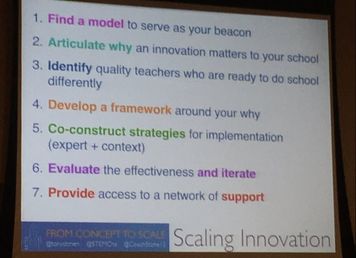
The next session I attended led me to Dr. Tony Donon, Principal of the STEM School Chattanooga (@STEMcha) and Michael Stone, Director of the Public Education Foundation of Chattanooga. These two gentlemen were a dynamic duo; great presenters with vision on how to design PBL as well as experience in digital fabrication, opening FabLabs and scaling their impact across multiple schools. In the spirit of professional collaboration, our conversations extended into the evening. Our mutual interests in innovation led us to a rich exchange of ideas.
The STEM School website (http://www.stemschoolchattanooga.net/) is rich with resources and curriculum units for everyone to see and use. "By consistently exploring and implementing innovative practices, the STEM School builds a strong foundation for thinking critically, innovating, and leading. This foundation equips students to address current issues and problems and provides them with the tools they need to continue to learn and grow. The STEM School requires a unique approach to both teaching and learning – which impacts three main areas: its curriculum, its classroom structure, and its grading practices.
Michael's work with the Public Education Foundation (PEF) helps, among other things, scale the work of the STEM school, which he calls a "beacon" in the area. He is responsible, along with his colleagues for opening VWeLabs around the Hamilton County Schools in Tennessee.
Several other useful resources for those interested in digital fabrication that were shared include:
The Volkswagen eLabs website - https://www.vwelab.org/
The Fab Foundation Website - http://fabfoundation.org/
The STEM School website (http://www.stemschoolchattanooga.net/) is rich with resources and curriculum units for everyone to see and use. "By consistently exploring and implementing innovative practices, the STEM School builds a strong foundation for thinking critically, innovating, and leading. This foundation equips students to address current issues and problems and provides them with the tools they need to continue to learn and grow. The STEM School requires a unique approach to both teaching and learning – which impacts three main areas: its curriculum, its classroom structure, and its grading practices.
Michael's work with the Public Education Foundation (PEF) helps, among other things, scale the work of the STEM school, which he calls a "beacon" in the area. He is responsible, along with his colleagues for opening VWeLabs around the Hamilton County Schools in Tennessee.
Several other useful resources for those interested in digital fabrication that were shared include:
The Volkswagen eLabs website - https://www.vwelab.org/
The Fab Foundation Website - http://fabfoundation.org/
Meeting Roger Andre and Stephanie Lolich from VANTAGE , taught us about a unique half day program that is part of the Minnetonka Public Schools where students work with a project team to solve real-world problems and learn about the challenges of project-driven work. Under the direction of a teacher and in partnership with industry professionals, these project teams strive to make a contribution to a partner-defined project while gaining invaluable experience in today's marketplace. Some ideas that resonated for me during this session from these amazing educators were:
Our Presentation
Our Planning Template
Some takeaways from our talk was that it was unique. The programs we heard about included students completing projects with businesses, visiting them, and having guest lecturers, but there were no internships. There were also no college partnerships; credits offered were through tests, such as AP and IB. We also learned that each school has a unique set of challenges and solutions to address their needs and that no two programs are alike. Some districts have STEM schools, and some schools create half day programs with multiple "strands" or offerings.
The conference was eye opening for me on many levels, but mostly because it caused me to reflect on its title, "Redesigning for School Success." It always seems like we are "redesigning" and in the past I thought that was because we were doing it wrong; because we have not been successful. That is entirely untrue. Public schools were founded in this country to make sure its future generations of citizens have the skills to be productive members of society. They started with reading, writing, and mathematics and the list of subjects began to grow from there.
So... it is not because we are doing it wrong that we need redesign, it is because our world is changing, the skills needed are changing, and we must be nimble in our thinking in order to keep preparing our students to be productive members of society. I have never been more #MineolaProud of our district and it's ability to stay at the forefront... always seeking to provide our students with the skills to "...inspire each student to be a life-long learner, pursue excellence, exhibit strength of character and contribute positively to a global society."
- "HR Day" - where students participate in mock interviews and resume evaluations
- "Shark Tank" - Students present a business plan to partner college
- "Lean Canvas" - an adaptation of Business Model Canvas by Alexander Osterwalder which Ash Maurya created in the Lean Startup spirit (Fast, Concise and Effective startup).
- Online course offerings to address scheduling conflicts
- Guidance counselors must be able to explain the programs (Health Sciences, Global Food Sustainability, Design and Marketing, Digital Journalism, Business Analytics, and Global Business) well to the students and their parents
Our Presentation
Our Planning Template
Some takeaways from our talk was that it was unique. The programs we heard about included students completing projects with businesses, visiting them, and having guest lecturers, but there were no internships. There were also no college partnerships; credits offered were through tests, such as AP and IB. We also learned that each school has a unique set of challenges and solutions to address their needs and that no two programs are alike. Some districts have STEM schools, and some schools create half day programs with multiple "strands" or offerings.
The conference was eye opening for me on many levels, but mostly because it caused me to reflect on its title, "Redesigning for School Success." It always seems like we are "redesigning" and in the past I thought that was because we were doing it wrong; because we have not been successful. That is entirely untrue. Public schools were founded in this country to make sure its future generations of citizens have the skills to be productive members of society. They started with reading, writing, and mathematics and the list of subjects began to grow from there.
So... it is not because we are doing it wrong that we need redesign, it is because our world is changing, the skills needed are changing, and we must be nimble in our thinking in order to keep preparing our students to be productive members of society. I have never been more #MineolaProud of our district and it's ability to stay at the forefront... always seeking to provide our students with the skills to "...inspire each student to be a life-long learner, pursue excellence, exhibit strength of character and contribute positively to a global society."
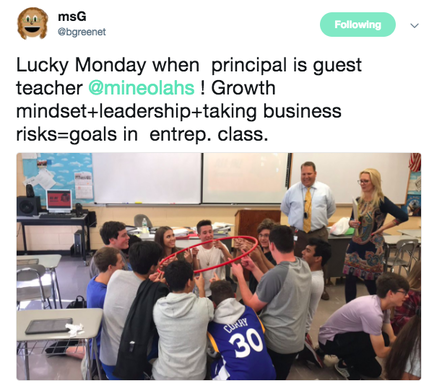
I had the honor of speaking to our new Business and Entrepreneurship class this past week. I brought with me a presentation, two videos, and hula hoops to help me to illustrate my points. We all need tools in order to help inspire students to do great things and contribute positively to a global society as our district mission includes.
This course is not just an elective, but another example of the innovative nature of the programming we are providing our students at Mineola High School. It is the first of what we hope to evolve into a business and advanced manufacturing "strand." A direction, or pathway that students can travel in their quest to be "college and career ready."
This course is not just an elective, but another example of the innovative nature of the programming we are providing our students at Mineola High School. It is the first of what we hope to evolve into a business and advanced manufacturing "strand." A direction, or pathway that students can travel in their quest to be "college and career ready."
| I began class with a traditional presentation to illustrate several points that I think we often miss the mark with. They include the seven survival skills for careers, college, and citizenship (figure 1). I wanted students to know that they cannot be passive learners any more and that skills that they need are often not taught in traditional high school classes. |
Next, I wanted them to know they were were brought together to help create something that has never been done before in the high school. That is... a school business that sells products designed and created by the students themselves. We created a Business Club as well; and opened our Fabrication Lab (FabLab) and staffed it after-school for students to produce. I also wanted students to know that it is in classes like this, where world changers are born... classes where the learning is messy and students have the ability to think outside the box.
This sounds like a great opportunity for creativity, collaboration, communication, and critical thinking.... right? Well, of course it is; but as it turns out, these are difficult concepts for adolescents who are very used to traditional schooling. Perfect! This class has already empowered students to own their own learning.
This sounds like a great opportunity for creativity, collaboration, communication, and critical thinking.... right? Well, of course it is; but as it turns out, these are difficult concepts for adolescents who are very used to traditional schooling. Perfect! This class has already empowered students to own their own learning.
| They need to answer many difficult questions and go through some time consuming processes but, the end goal will be a functioning pop-up store with an online presence. Some questions:
|
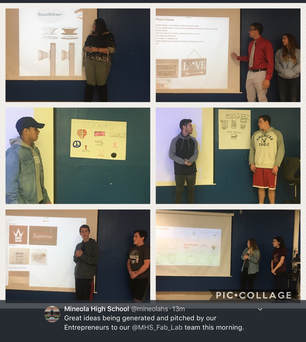 Students present their ideas to the FabLab team
Students present their ideas to the FabLab team Fast forward to this morning... Today was "pitch day." Six groups of entrepreneurs came to the iHub to pitch their ideas to our FabLab team. The ideas included T-Shirts, Stickers, Pop Sockets, Mugs, Frames, and Signs. The ideas were vast and the student presentations were comprehensive. The FabLab team answered questions that related to materials, production time, and feasibility. They also gave the students some questions to go back to their groups and think about related to design and cost. It was a great meeting that raised the excitement of the reality of this tremendous opportunity.
Having a lot of questions is both frustrating and rewarding at the same time. While it is difficult to begin with the end in mind, I know the journey to entrepreneurship will be a rewarding one... one that prepares students for careers, college, and citizenship.
Having a lot of questions is both frustrating and rewarding at the same time. While it is difficult to begin with the end in mind, I know the journey to entrepreneurship will be a rewarding one... one that prepares students for careers, college, and citizenship.
At Mineola High School, College and Career Readiness has taken on a whole new meaning. While we offer a host of options for our students including multiple "elective" classes, we now offer a specific direction for students, a "strand" that leads to both a high school diploma and a college certificate.
After looking at our community college persistence data and number of students requiring remedial coursework upon entering college, we knew we needed a better plan, one that could prepare them for their future in an ever-changing market. In a market where the jobs we prepare them for either do not exist, or are in fields that our current system is not familiar with. Jon Oringer, founder and CEO of Shutterstock reminds us, “There is a lack of talent in technology, and we need to be encouraging kids in school to learn how to code. We need to encourage computer science as a major. We need to encourage entrepreneurism.”
We also need an increased focus on student interests. So... where do you start? We wanted to identify a field of study that provided students with an excellent experience that would either ignite a passion for further study in college or prepare them to enter the workforce. We also wanted an area that would allow students, once interested, to choose from a wide range of opportunities in the chosen field of study (figure 1). We began with computer science where students are interested, and the job outlook is bright.
After looking at our community college persistence data and number of students requiring remedial coursework upon entering college, we knew we needed a better plan, one that could prepare them for their future in an ever-changing market. In a market where the jobs we prepare them for either do not exist, or are in fields that our current system is not familiar with. Jon Oringer, founder and CEO of Shutterstock reminds us, “There is a lack of talent in technology, and we need to be encouraging kids in school to learn how to code. We need to encourage computer science as a major. We need to encourage entrepreneurism.”
We also need an increased focus on student interests. So... where do you start? We wanted to identify a field of study that provided students with an excellent experience that would either ignite a passion for further study in college or prepare them to enter the workforce. We also wanted an area that would allow students, once interested, to choose from a wide range of opportunities in the chosen field of study (figure 1). We began with computer science where students are interested, and the job outlook is bright.
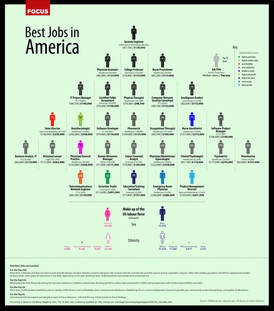 Figure 2
Figure 2 CNNMoney describes the best jobs in America in their May 2017 story. Their list of the top 100 careers with big growth, great pay and satisfying work includes mobile app developer, systems engineer, database analyst, and others in the IT field (see figure 2).
We knew we needed a partner in higher education and we looked 8.4 miles to the west of our school to Queensborough Community College. Our initial discussions began in the summer of 2014 and involved developing a partnership where students left with more than just a few college courses under their belt like a traditional dual enrollment program. Through our work with the Connect to College Program, Vice President for Pre-College, Continuing Education, and Workforce Development and the Chairperson of the Engineering Technology Program, we developed a pathway for our high school juniors and seniors to graduate with a high school diploma as well as a New Media Technology Certificate from the college. This is the first program of its kind in our region and an extremely exciting opportunity for our students.
We knew we needed a partner in higher education and we looked 8.4 miles to the west of our school to Queensborough Community College. Our initial discussions began in the summer of 2014 and involved developing a partnership where students left with more than just a few college courses under their belt like a traditional dual enrollment program. Through our work with the Connect to College Program, Vice President for Pre-College, Continuing Education, and Workforce Development and the Chairperson of the Engineering Technology Program, we developed a pathway for our high school juniors and seniors to graduate with a high school diploma as well as a New Media Technology Certificate from the college. This is the first program of its kind in our region and an extremely exciting opportunity for our students.
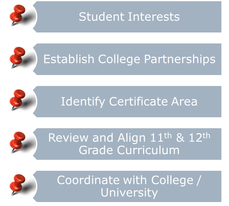 figure 3
figure 3 Planning and Preparation
We planned to launch this program in the 2016-2017 school year with "Cohort A" and needed to prepare. We spent a great deal of the 2015-2016 school year working out the college articulation agreement and planning to serve the students in a Cohort type program. We needed to backwards plan, beginning with the end in mind while involving our stakeholders in the entire process in order to establish buy in (figure 3). What courses could we teach at the high school? What courses need to be taught at the college? Did we have the right teacher or did we need to hire someone? How would the students get to and from the college? How would we identify students? We knew we had the support of our Board of Education, in fact three of their goals were:
Recruitment of both the right teacher as well as the right students was essential. We conducted an extensive search and hired a dynamic teacher with an extensive computer science background. We also had multiple outreaches within our district in order to explain the program and opportunity it would provide for our students to our community.
What does the program look like?
The program is designed for students to complete as a cohort, in their junior and senior year. We also begin by exposing all students to an Exploring Computer Science course in the ninth grade as well as opportunities in robotics in order to keep an eye on interest and identify potential candidates early on in their high school career.
In a student's junior year, they complete dual enrolled courses in Operating Systems and Systems Deployment, Web Technology I, and Web Client Programming: JavaScript, and Pre-Calculus at the high school in addition to their science, English, social studies, and other high school requirements. We work in the confines of a traditional nine period day. Students take their high school requirements during periods 1 through 4 and their college courses (at the high school) periods 5 through 9.
In their senior year, students follow the same structure but are taken by bus to the Queensborough Community College Campus during the afternoon time slot (10:30-2:20) where they take Network Fundamentals I, Introduction to C++, Personal Computer Technology, Architecture, and Troubleshooting (A+ Certification) as well as Economics.
The final piece to truly solidify a college and career readiness experience was to create a meaningful internship experience for our students. We looked to our friends at Core Business Technology Solutions for their expertise. They too were "All-In" from the moment we mentioned it. We conducted multiple focus group meetings that once again included our Superintendent, Assistant Superintendent, Guidance Director, Principal, and Core Team to hash out our vision and logistics. Core was able to provide three experiences that the students would rotate through (figure 4) over the course of the school year.
We planned to launch this program in the 2016-2017 school year with "Cohort A" and needed to prepare. We spent a great deal of the 2015-2016 school year working out the college articulation agreement and planning to serve the students in a Cohort type program. We needed to backwards plan, beginning with the end in mind while involving our stakeholders in the entire process in order to establish buy in (figure 3). What courses could we teach at the high school? What courses need to be taught at the college? Did we have the right teacher or did we need to hire someone? How would the students get to and from the college? How would we identify students? We knew we had the support of our Board of Education, in fact three of their goals were:
- Develop and implement a four-year plan to align High School coursework and partnerships in specific Career and Technical (CTE) strands
- Explore partnerships with local universities to offer certificate programs to our students during his/her senior year
- Continue to develop and encourage students to engage in college level coursework
Recruitment of both the right teacher as well as the right students was essential. We conducted an extensive search and hired a dynamic teacher with an extensive computer science background. We also had multiple outreaches within our district in order to explain the program and opportunity it would provide for our students to our community.
What does the program look like?
The program is designed for students to complete as a cohort, in their junior and senior year. We also begin by exposing all students to an Exploring Computer Science course in the ninth grade as well as opportunities in robotics in order to keep an eye on interest and identify potential candidates early on in their high school career.
In a student's junior year, they complete dual enrolled courses in Operating Systems and Systems Deployment, Web Technology I, and Web Client Programming: JavaScript, and Pre-Calculus at the high school in addition to their science, English, social studies, and other high school requirements. We work in the confines of a traditional nine period day. Students take their high school requirements during periods 1 through 4 and their college courses (at the high school) periods 5 through 9.
In their senior year, students follow the same structure but are taken by bus to the Queensborough Community College Campus during the afternoon time slot (10:30-2:20) where they take Network Fundamentals I, Introduction to C++, Personal Computer Technology, Architecture, and Troubleshooting (A+ Certification) as well as Economics.
The final piece to truly solidify a college and career readiness experience was to create a meaningful internship experience for our students. We looked to our friends at Core Business Technology Solutions for their expertise. They too were "All-In" from the moment we mentioned it. We conducted multiple focus group meetings that once again included our Superintendent, Assistant Superintendent, Guidance Director, Principal, and Core Team to hash out our vision and logistics. Core was able to provide three experiences that the students would rotate through (figure 4) over the course of the school year.
This year long internship experience takes place on the days that students do not have class on the college campus (periods 5 through 9). In the tech services cycle, students work with our district technicians, learning about network operations, hardware, software, and the tech ticket system with hands-on experience. In the marketing cycle, our students meet virtually using Cisco TelePresence in our school with the marketing team at Core to develop strategies to use with the company's programs. Finally, on the sales/business side of the operation, students are taken to Core's office to work with the business team on site. All of the students are treated like real employees of the company and wear uniform shirts and ID badges.
We’d like to think we are preparing our students for their future through this unique program and giving a whole new meaning to College and Career Readiness.
Hear our program featured on "Spotlight on Long Island Schools."
Program Bulletin:
We’d like to think we are preparing our students for their future through this unique program and giving a whole new meaning to College and Career Readiness.
Hear our program featured on "Spotlight on Long Island Schools."
Program Bulletin:
| qcc_program_brochure_2016.pdf | |
| File Size: | 244 kb |
| File Type: | |

As each new year begins, students transition from grade to grade and in some cases from school to school. We are keenly aware that the transition from middle school to high school could be a slightly stressful experience. The purpose of this post is to let you know that making this transition smooth is extremely important to us.
The first two days for 8th graders will be different... with a focus on getting comfortable with the building as well as the procedures, expectations, and technology here at the high school. There will also be plenty of time to visit the lockers and practice learning a new lock combination. This work will continue throughout the year as we work in our advisory groups and help our students develop a growth mindset.
On day one, the periods are shortened (Figure 1) and students will spend the first block of time touring the building.
Then, they will hear about the "Road to Graduation" and complete an activity in which they browse the high school course catalog in order to see the big picture! Mr. Azzara, our 8th grade counselor will be pushing into all classes and discussing the following:
The first two days for 8th graders will be different... with a focus on getting comfortable with the building as well as the procedures, expectations, and technology here at the high school. There will also be plenty of time to visit the lockers and practice learning a new lock combination. This work will continue throughout the year as we work in our advisory groups and help our students develop a growth mindset.
On day one, the periods are shortened (Figure 1) and students will spend the first block of time touring the building.
- Guidance Offices
- Nurse’s Office
- Main Office
- Attendance Office
- Cafeteria - On your way point out music wing.
- Design Wing (Fab Lab &Art room)
- Gym & Weight Room
- Auditorium
- Library & Student Service Center.
- Athletics and Fine Arts Offices
- Technology Office
- Second Floor - English and Social Studies Office.
- Third Floor - Math and Science Office.
Then, they will hear about the "Road to Graduation" and complete an activity in which they browse the high school course catalog in order to see the big picture! Mr. Azzara, our 8th grade counselor will be pushing into all classes and discussing the following:
- Where the guidance office is
- How do you make an appointment to see him.
- Learning from mistakes, what to do when you get a test back, Importance of extra help
- The High School Transcript
- Clubs/Activities
| On the second day of school, each subject area will spend time with a specific App (Figure 2) that we use as an integral part of our structure. While students are accustomed to using the iPad from middle school, learning the new structure will help set everyone up for success. iTunesU houses our digital curriculum. Our students will be downloading their courses that have materials including videos that will help if they don't understand something from class. They are organized by unit. Edmodo is our communication tool. Our students and parents will be able to join their teachers' classes and receive information about upcoming assignments, tests, quizzes, etc. parents will hear more about this at Open House eBackpack is a workflow solution. Students can access their course materials in iTunes U and bring them into eBackpack to mark up. Students can save them in their own files or return them to a teacher when an “assignment” turn in is created. Mathspace provides students with adaptive work aligned to the courses they are taking in high school. Teachers are able to see every step their students complete as well as access a class dashboard of performance data. This will help to personalize learning and intervene where students are struggling. |
Finally, Actively Learn is a reading and writing platform that helps our students read for depth. It provides an environment where teachers can embed questions into reading assignments and monitor the progress of the students. When students attain deep understanding of text, they are able to establish meaning, analyze the text, and apply their knowledge in meaningful ways (e.g. writing an essay or completing a project).
Although your children will be tired after the first two days, please be sure to talk to them each night when they get home. Make sure they know what each of the images above are and that you know too. Parent involvement is an important part of student success. Finally, keep the lines of communication open and make sure your children internalize the importance of their decisions and how everything that they do makes a difference.
This is going to be a great 5 years!
This is going to be a great 5 years!
Categories
All
Advisory
Growth Mindset
Mentoring
Rapport
Relationships
School
Students
Archives
October 2023
June 2022
May 2020
April 2020
March 2020
February 2020
October 2019
March 2019
January 2019
December 2018
August 2018
April 2018
February 2018
October 2017
September 2017
August 2017
July 2017
March 2017
May 2015
August 2014
September 2013
August 2013
March 2013
Whittney Smith, Ed.D.
Dr. Smith is the Principal of Mineola High School in Garden City Park, NY. He is also an Adjunct Professor in the Ruth Ammon School of Education at Adelphi University.

